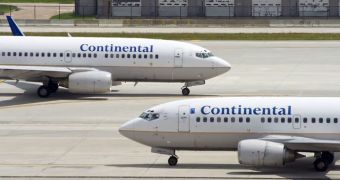These days, the radar-based air traffic network is very old and outdated, since it is a remnant of the one used in the Second World War. The way it is performed and applied causes a major waste of fuel, money and time, while also proving harmful for the environment because of the pollution generated by the unnecessary fuel burning. Thus, shifting to an upgraded system based, just like the GPS, on satellite communication and data transmission would prove to be a great asset for the way air travels take place.
Although switching to NextGen, as the improvement plan is called, has been suggested for more than ten years now, the project has remained trapped in the planning, assessment and discussions phase ever since. In the meanwhile, funding issues and the difficulties the switching process entailed have not helped the situation in any way either.
The satellite-based technology, which has clearly proven its effectiveness for cars and mobile phones, could triple air travels and transportation, decreasing delays by more than 50%, while also increasing the safety and reducing pollution – and all this for an estimated cost of $35 billion. This could be the world's next big step after landing on the moon. The calculations made by experts from the Associated Press have demonstrated that using the NextGen would have decreased fuel costs by $5 billion this year alone.
As of now, airplanes are guided by radio beacons across narrow corridors in the air, which more than often means zigzagging along large sweeping arcs during international flights, thus wasting about 3.3 billion gallons of fuel yearly. This, in turn, translates in losing more than $10 billion per year by 2025. As David Castelveter, the spokesman for the Air Transportation Association claims, this is “the equivalent of using an electric typewriter when others are using computers. It's a huge, huge drag on productivity.”
The NextGen satellite-powered technique would make this travel system obsolete by implementing a direct route flight, on the shortest, straightest line between 2 points. The implementation of the system is expected to be paid proper attention by the governing institutions worldwide. Although this may seem to require a tremendous effort to begin (airports would have to be redesigned to accommodate the predicted increase in traffic, while passengers would have to pay more for the services for a while), it would pay off in about 7 years.
Still, although fascinated by the prospects, it is the “now” factor that is detering most companies from outfitting their planes with complying technology (which costs about $200,000 per plane). Castelveter compares it with a car purchase process: “It's like you buying a new car and the dealer saying, ‘How would you like to buy this nifty GPS technology – but it won't be available in your area for years’.” Pilots, instead, are thrilled by the idea, since it would ease their work considerably, reducing their fatigue in the process.
On the other hand, some experts have a different opinion, stating that this large amount of money would be better spent on improving the current system, repairing, for example, computer systems like the one that caused 650 flight delays from Orlando to Chicago during this August. Robert Poole, an aviation expert from the Reason Foundation states, “I just think it's very unlikely to be done in anything like the time frame and the budget now projected. And that will be a tragedy for aviation.”

 14 DAY TRIAL //
14 DAY TRIAL //